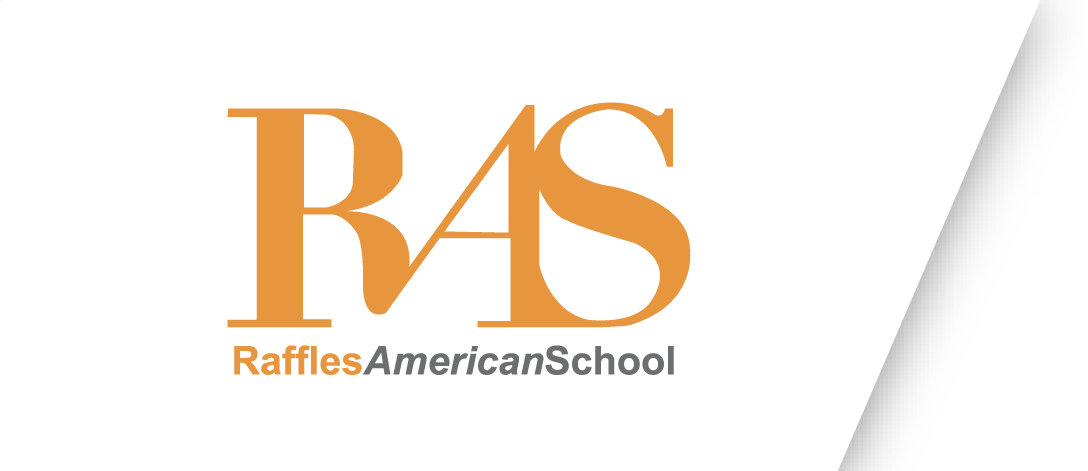[vc_row][vc_column][vc_single_image image=”58899″ img_size=”full” alignment=”center”][vc_custom_heading text=”Why Environment Matters: The Educational Benefits of Green Spaces and Modern Facilities” use_theme_fonts=”yes”][vc_column_text]At Raffles American School (RAS), the campus design, featuring large green spaces, sporting fields, and a wide variety of modern facilities, plays a crucial role in enhancing students’ learning experiences. The impact of the physical environment on education is often underestimated, but research consistently shows that well-designed learning spaces can significantly influence student well-being, concentration, and overall academic performance.
One of the most significant benefits of having large green spaces at Raffles American School is the positive effect on students’ mental health. Exposure to nature has been shown to reduce stress, improve mood, and enhance cognitive function, all of which are critical for effective learning. A study published in the Journal of Environmental Psychology found that students with access to green spaces perform better academically and have higher levels of attention (Li & Sullivan, 2016). The green areas between RAS buildings are equipped with benches, offering students a peaceful environment to relax, recharge, and return to their studies with renewed focus.
[/vc_column_text][/vc_column][/vc_row][vc_row][vc_column][vc_row_inner][vc_column_inner width=”1/4″][vc_single_image image=”58903″ img_size=”medium”][/vc_column_inner][vc_column_inner width=”3/4″][vc_column_text]In addition to supporting mental well-being, the green sporting fields at RAS also play an important role in promoting physical health through outdoor activities. Regular physical activity is linked to improved academic performance, increased blood flow to the brain, and enhanced cognitive abilities (Hillman, Erickson, & Kramer, 2008). At RAS, the large outdoor areas support various sports with our Co-curricular Activities (CCAs), inter-school sports events, and recreational activities, promoting a balanced lifestyle that integrates academic and physical well-being.[/vc_column_text][/vc_column_inner][/vc_row_inner][/vc_column][/vc_row][vc_row][vc_column][vc_column_text]In addition to the benefits of green spaces, the diverse range of facilities at RAS contributes significantly to the holistic development of students. The campus has state-of-the-art facilities catering to a wide variety of interests, including arts, sciences, and athletics. This variety allows students to explore different fields, develop new skills, and pursue their passions in a supportive environment. According to the American School Board Journal, schools that provide diverse learning environments, including specialized facilities, see higher levels of student engagement and achievement (Tanner, 2009).[/vc_column_text][/vc_column][/vc_row][vc_row][vc_column][vc_row_inner][vc_column_inner width=”2/3″][vc_column_text]The importance of physical spaces in education is also supported by research showing that learning environments incorporating green spaces and well-designed facilities can improve students’ cognitive development. A study by the University of Illinois demonstrated that children with greater access to green areas had better cognitive functioning, as these spaces provide a calming effect that reduces mental fatigue (Faber Taylor & Kuo, 2009). Additionally, a study in Frontiers in Psychology highlighted that the design of educational spaces, including access to outdoor environments, can foster creativity, critical thinking, and problem-solving skills in students, which are three pillars of our four General Learning Outcomes (GLOs) (Barrett, Zhang, Moffat, & Kobbacy, 2013).[/vc_column_text][/vc_column_inner][vc_column_inner width=”1/3″][vc_single_image image=”58904″ img_size=”medium”][/vc_column_inner][/vc_row_inner][/vc_column][/vc_row][vc_row][vc_column width=”1/4″][vc_single_image image=”58905″ img_size=”medium”][/vc_column][vc_column width=”3/4″][vc_column_text]Furthermore, the variety of facilities at RAS supports differentiated instruction, allowing teachers to tailor their teaching methods to meet the diverse needs of students. For instance, watching science documentaries of the solar system in our school’s planetarium can captivate visual learners and help them better understand complex astronomical concepts. Similarly, exploring our nature trail during geography lessons allows students to connect theoretical concepts with real-world examples, deepening their understanding of the natural environment. This flexibility in teaching approaches is crucial for ensuring all students can achieve their full potential.[/vc_column_text][/vc_column][/vc_row][vc_row][vc_column][vc_column_text]The large green spaces, sports fields, and wide variety of facilities at Raffles American School are more than just aesthetic features; they are integral to creating an environment conducive to learning. By promoting physical and mental well-being, fostering engagement and collaboration, and supporting diverse learning styles, these elements of the RAS campus contribute to its students’ overall success and development.
Bibliography
- Hillman, C. H., Erickson, K. I., & Kramer, A. F. (2008). Be smart, exercise your heart: exercise effects on brain and cognition. Nature Reviews Neuroscience, 9(1), 58-65. https://www.nature.com/articles/nrn2298
- Dongying Li, William C. Sullivan, Impact of views to school landscapes on recovery from stress and mental fatigue, Landscape and Urban Planning, Volume 148, 2016, Pages 149-158 https://doi.org/10.1016/j.landurbplan.2015.12.015
- Tanner, C. K. (2009). Effects of school design on student outcomes. American School Board Journal, 196(2), 25-29. https://www.emerald.com/insight/content/doi/10.1108/09578230910955809/full/html
- Faber Taylor, A., & Kuo, F. E. (2009). Children with attention deficits concentrate better after a walk in the park. Journal of Attention Disorders, 12(5), 402-409. https://pubmed.ncbi.nlm.nih.gov/18725656/
Barrett, P., Zhang, Y., Moffat, J., & Kobbacy, K. (2013). A holistic, multi-level analysis identifying the impact of classroom design on pupils’ learning. Frontiers in Psychology, 4, 803. https://www.sciencedirect.com/science/article/abs/pii/S0360132312002582[/vc_column_text][/vc_column][/vc_row]

13 Responses